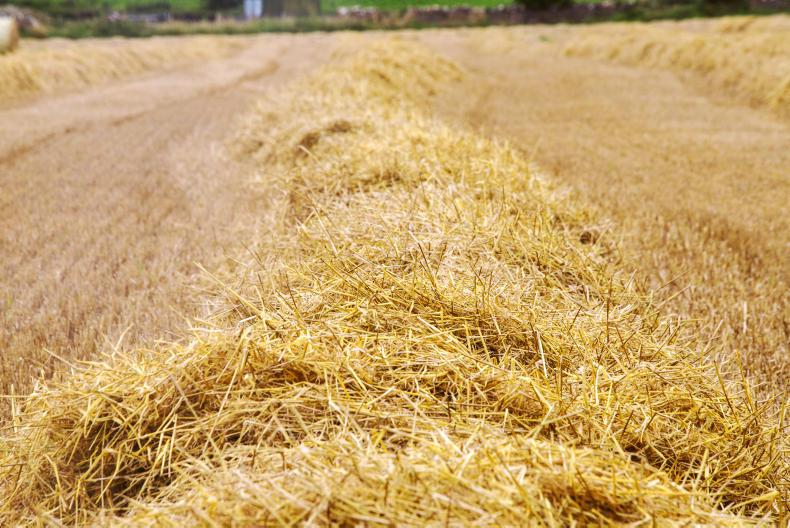Straw supply has been in focus in recent weeks.
The dynamics of Ireland's straw market is set to change dramatically this year due to the introduction of the straw incorporation scheme and Brexit.
The €10m straw incorporation scheme has been warmly welcomed by farmers and will act as a base price for straw production.
As reported in this week’s Irish Farmers Journal, Brexit will change how we import straw from our nearest neighbour, with a range of new checks and documents now required.
Straw is imported into Ireland from Britain either directly or via Northern Ireland.
All British straw which crosses the Irish Sea is subject to the new checks.
Imports
Table 1 outlines imported tonnages of cereal straw and husks from 2016 to 2020 and its country of origin.
According to the CSO, 15,872t of straw was imported from Britain in 2019 and 7,492t from Northern Ireland. This equated to €1.2m in value.
Import tonnages were similar in 2018, but were considerably lower in 2016 and 2017.
Spain has also proven to be a significant source of imported straw, with over 10,000t imported in 2019 and close to 4,000t in 2018.
Exports
A substantial amount of straw is also exported to Northern Ireland each year, averaging around 5,000t (see Table 2).
This equates to around €300,000 to €400,000 in value to Irish growers per annum.
However, figures for 2020 (Jan-Nov) show a dramatic decrease in straw exports, amounting to just 1,760t.
Straw supplies tightened significantly last autumn due to a decreased winter crop area and poor straw yields.






 This is a subscriber-only article
This is a subscriber-only article











SHARING OPTIONS: